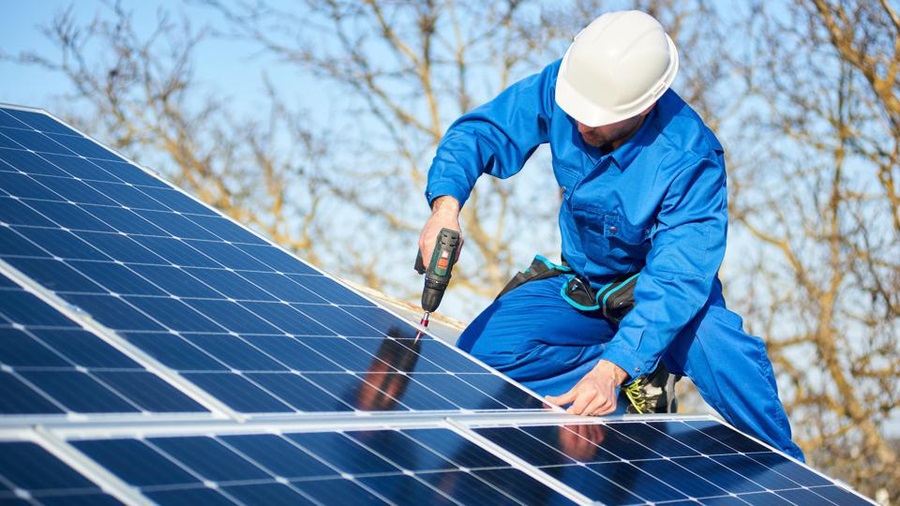Installing solar panels in your home is a great way to save money on electricity costs while also helping the environment. When you don’t know what to expect, solar panel installations seem complicated.
How does the solar panel installation process work?
Installing solar panels on an average-sized home is a relatively straightforward job carried out over several days by a licensed solar contractor.
- Site evaluation – An initial site evaluation is done to inspect your home’s site layout, roof structure, and electrical system. The area’s sun exposure throughout the year and possible obstructions are assessed to determine the ideal placement of the panels. Your electric usage history helps determine the proper solar array size.
- System design – Your installer will design the complete solar power system: number of panels, panel placement, size of inverters and batteries if required, and more. Detailed specifications, permits, projected electricity output, and cost breakdowns will be provided to you for approval.
- Permitting – Your solar company handles permitting by submitting plans and documentation to your city building department. For grid-tied systems without batteries, most areas have streamlined solar permitting processes. Building permits ensure compliance with fire and electric codes.
- Installation – It takes 2-4 days for a crew of installers to mount racks and solar panels on your roof or ground site (using penetrating mounts or ballasts), run electrical connections to your breaker box, and complete safety inspections and testing. Depending on the space available, batteries can be installed inside or outside.
- Inspection – A city or county building inspector inspects the system before the utility turns it on. They check for proper mounting, wiring methods, grounding, and labeling for final sign-off.
- Interconnection – To operate in parallel with the grid, your utility company will install a bi-directional net meter so you receive energy bill credits when you export extra solar electricity to the grid during the daytime. For more details, click here guide to solar panel installations.
What incentives exist for installing solar panels?
The federal investment tax credit allows you to deduct 26% of your solar panel system costs from your income taxes. Many state, city, and utility incentives offset an additional 10%-over 40% of overall costs. Common solar incentives include:
- Federal solar tax credit – a 26% credit on all system costs in 2022-2023, 22% in 2024, and 0% thereafter
- State rebates – upfront cash rebates reducing project cost or performance-based incentives (PBIs)
- Renewable energy credits (SRECs) – value tied to your system’s green energy generation
- Net metering – energy bill credits for exporting surplus power to the grid
- Property tax exemption – 100% exemption on increased property value from solar
- Sales tax exemption – no sales tax on solar equipment in many areas
Be sure to research your specific state, county, and utility incentives. Incentives drastically cut the out-of-pocket costs for installing solar power over the system’s 25+ year lifespan. Your solar provider will help you maximize available incentives. Take time to evaluate multiple options so you know you are getting a high-quality system for the best price from a reputable local solar company.
You may also like
-
Step-by-Step Plan Tips for Selling House without Stress
-
Best Options for Shipping Containers in Bozeman
-
Design & Function: A Guide to Choosing the Right Style of Glass for Your Office Partitions
-
Useful Tips for Successful Installation of Torch Down Roofing
-
Essential Maintenance and Care Tips for Your Home

